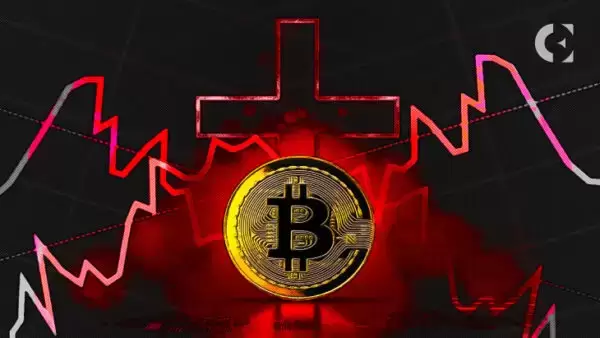 |
|
 |
|
 |
|
 |
|
 |
|
 |
|
 |
|
 |
|
 |
|
 |
|
 |
|
 |
|
 |
|
 |
|
 |
|
作為Solana的聯合創始人Anatoly Yakovenko,加密貨幣的景觀正在見證了一場重大的意識形態衝突,大膽地挑戰了主要的行業敘事區塊鏈規模。

An ideological clash is brewing in the heart of the cryptocurrency landscape, specifically regarding the best strategy for scaling blockchain technology. Anatoly Yakovenko, co-founder of Solana (SOL), is assertively challenging the industry narrative by stating that Layer-1 (L1) blockchains, like Solana, can achieve both speed and cost-efficiency without needing Layer-2 (L2) solutions.
意識形態衝突正在加密貨幣景觀的核心釀造,特別是關於擴展區塊鏈技術的最佳策略。 Solana(Sol)(SOL)的聯合創始人Anatoly Yakovenko聲稱通過指出像Solana這樣的第1層(L1)區塊鏈可以達到速度和成本效率而無需第2層(L2)解決方案,對行業敘事質疑。
This assertion directly contradicts the widely accepted belief that L2s are crucial for enhancing blockchain scalability and performance, setting the stage for a heated debate on the optimal architecture for decentralized networks.
這種斷言直接與公認的信念相矛盾,即L2對於增強區塊鏈的可伸縮性和性能至關重要,為分散網絡的最佳體系結構進行了激烈的辯論奠定了基礎。
An L1-Centric Vision: Efficiency Without Layers
以L1為中心的視覺:無層的效率
以L1為中心的視覺:無層的效率
Yakovenko’s critique of L2 solutions stems from his belief that L1 blockchains, through their native design, can be sufficiently fast, cheap, and secure. He maintains that L2 solutions, despite aiming to augment performance, ultimately introduce new complexities and dependencies.
Yakovenko對L2解決方案的批評源於他相信L1區塊鏈通過其本土設計可以足夠快,便宜且安全。他堅持認為,儘管旨在提高性能,但L2解決方案最終引入了新的複雜性和依賴性。
“I don’t think we need anything other than the base layer to be fast enough, and we can make it fast enough,” Yakovenko asserts.
Yakovenko斷言:“我認為除了基層以外,我們不需要任何其他東西,我們可以使它足夠快。”
His skepticism extends to Ethereum’s (ETH) scaling model, which he views as pivoting too quickly to L2 solutions, to the detriment of the base layer.
他的懷疑態度擴展到以太坊的(ETH)縮放模型,他認為這過於迅速到L2解決方案,從而損害了基礎層。
“It feels like we’re moving away from the base layer too quickly. We’re going to have a very slow base layer, and then we’re going to have a lot of L2s that are going to be dependent on it.”
“感覺就像我們要遠離基層太快了。我們將擁有一個非常緩慢的基礎層,然後我們將擁有很多L2S,這些L2將依賴於此。”
Yakovenko’s L1 advocacy is intrinsically linked to Solana’s ambition to challenge Ethereum’s dominance as the leading L1 network. Solana, known for its high throughput and low transaction fees, aims to provide a competitive ecosystem for developers and users.
Yakovenko的L1倡導與Solana的野心本質上聯繫在一起,挑戰以太坊作為領先的L1網絡的統治地位。 Solana以其高吞吐量和低交易費用而聞名,旨在為開發人員和用戶提供競爭性生態系統。
“We can get to a place where the base chain is fast enough, and we don’t need anything else,” he adds, highlighting Solana’s potential to achieve optimal performance without resorting to L2 solutions.
他補充說:“我們可以到達基本鏈足夠快的地方,而且我們不需要其他任何東西。”他強調了索拉納在不採取L2解決方案的情況下實現最佳性能的潛力。
Yakovenko’s bold stance has sparked a lively debate within the cryptocurrency community, with varying perspectives on the future of blockchain scaling. Some agree with his vision of high-performance L1s, while others maintain that L2 solutions are necessary to handle the increasing demand for blockchain applications.
Yakovenko的大膽立場引發了加密貨幣社區中的一場激烈的辯論,對區塊鏈規模的未來有不同的看法。有些人同意他對高性能L1的看法,而另一些人則認為L2解決方案對於處理對區塊鏈應用的不斷增長是必要的。
As the cryptocurrency industry continues to evolve, the discussion about the best scaling strategy will undoubtedly persist. Yakovenko’s vision of a future dominated by high-performance L1s challenges the prevailing consensus on blockchain architecture, setting the stage for an interesting chapter in the development of decentralized technology.
隨著加密貨幣行業的不斷發展,關於最佳擴展策略的討論無疑將持續存在。 Yakovenko對由高性能L1S主導的未來的願景挑戰了在區塊鏈體系結構上的普遍共識,這為分散技術開發的有趣章節奠定了基礎。
Anatoly Yakovenko, the co-founder of Anatoly, has sparked a critical debate about the future of blockchain scaling, rolling up his sleeves to challenge the accepted narrative. In a recent interview, Yakovenko asserted that Layer-1 (L1) blockchains can achieve both speed and cost-efficiency without needing Layer-2 (L2) solutions.
Anatoly的聯合創始人Anatoly Yakovenko引發了有關區塊鏈規模的未來的批判性辯論,滾起了他的袖子,以挑戰公認的敘述。在最近的一次採訪中,Yakovenko斷言,第1層(L1)區塊鏈可以同時達到速度和成本效率,而無需第2層(L2)解決方案。
This assertion directly contradicts the widely accepted belief that L2s are crucial for enhancing blockchain scalability and performance, setting the stage for a heated discussion on the optimal architecture for decentralized networks.
這種斷言直接與公認的信念相矛盾,即L2對於增強區塊鏈的可伸縮性和性能至關重要,為分散網絡的最佳架構進行了激烈的討論奠定了基礎。
An L1-Centric Vision: Efficiency Without Layers
以L1為中心的視覺:無層的效率
Yakovenko’s critique of L2 solutions stems from his belief that L1 blockchains, through their native design, can be sufficiently fast, cheap, and secure. He maintains that L2 solutions, despite aiming to augment performance, ultimately introduce new complexities and dependencies.
Yakovenko對L2解決方案的批評源於他相信L1區塊鏈通過其本土設計可以足夠快,便宜且安全。他堅持認為,儘管旨在提高性能,但L2解決方案最終引入了新的複雜性和依賴性。
“I don’t think we need anything other than the base layer to be fast enough, and we can make it fast enough,” Yakovenko asserts.
Yakovenko斷言:“我認為除了基層以外,我們不需要任何其他東西,我們可以使它足夠快。”
His skepticism extends to Ethereum’s scaling model, which he views as pivoting too quickly to L2 solutions, to the detriment of the base layer.
他的持懷疑態度擴展到以太坊的縮放模型,他認為這是對L2解決方案的旋轉速度,從而損害了基礎層。
“It feels like we’re moving away from the base layer too quickly. We’re going to have a very slow base layer, and then we’re going to have a lot of L2s that are going to be dependent on it.”
“感覺就像我們要遠離基層太快了。我們將擁有一個非常緩慢的基礎層,然後我們將擁有很多L2S,這些L2將依賴於此。”
Yakovenko’s L1 advocacy is intrinsically linked to Solana’s ambition to challenge Ethereum’s dominance as the leading L1 network. Solana, known for its high throughput and low transaction fees, aims to provide a competitive ecosystem for developers and users.
Yakovenko的L1倡導與Solana的野心本質上聯繫在一起,挑戰以太坊作為領先的L1網絡的統治地位。 Solana以其高吞吐量和低交易費用而聞名,旨在為開發人員和用戶提供競爭性生態系統。
“We can get to a place where the base chain is fast enough, and we don’t need anything else,” he adds, highlighting Solana’s potential to achieve optimal performance without resorting to L2 solutions.
他補充說:“我們可以到達基本鏈足夠快的地方,而且我們不需要其他任何東西。”他強調了索拉納在不採取L2解決方案的情況下實現最佳性能的潛力。
Yakovenko’s bold stance has sparked a lively debate within the cryptocurrency community, with varying perspectives on the future of blockchain scaling. Some agree with his vision of high-performance L1s, while others maintain that L2 solutions are necessary to handle the increasing demand for blockchain applications.
Yakovenko的大膽立場引發了加密貨幣社區中的一場激烈的辯論,對區塊鏈規模的未來有不同的看法。有些人同意他對高性能L1的看法,而另一些人則認為L2解決方案對於處理對區塊鏈應用的不斷增長是必要的。
As the cryptocurrency industry continues to evolve, the discussion about the best scaling strategy will undoubtedly persist. Yakovenko’s vision of a future dominated by high
隨著加密貨幣行業的不斷發展,關於最佳擴展策略的討論無疑將持續存在。 Yakovenko關於以高中為主的未來的願景
免責聲明:info@kdj.com
所提供的資訊並非交易建議。 kDJ.com對任何基於本文提供的資訊進行的投資不承擔任何責任。加密貨幣波動性較大,建議您充分研究後謹慎投資!
如果您認為本網站使用的內容侵犯了您的版權,請立即聯絡我們(info@kdj.com),我們將及時刪除。
-

-

-

- Dogecoin(Doge)以0.20美元的價格遇到重大市場抵抗力,停止了其最近的恢復勢頭
- 2025-03-29 21:35:12
- 由比特幣領導的加密貨幣市場面臨著衰退,影響了Dogecoin的價格軌跡。
-

- Nexaglobal推出了未來的世界代幣(FWT),徹底改變了加密投資
- 2025-03-29 21:35:12
- 在當今快節奏的數字融資環境中,保持領先地位需要融合創新,戰略願景和尖端技術。
-

- 以太坊(ETH)市場跌至看跌情緒的渦流中
- 2025-03-29 21:30:12
- 當以太坊(ETH)陷入看跌式情緒時,加密貨幣市場正在見證令人恐懼的景象。
-

-

- 加密市場今天崩潰的真正原因:比特幣與altcoin分析
- 2025-03-29 21:25:12
- 從市場面臨急劇糾正的情況下,從一個有希望的一周開始,加密貨幣的一周迅速變成了失望。
-

- 比特幣(BTC)死亡交叉模式可以標誌著市場的底部
- 2025-03-29 21:25:12
- 這種模式通常被視為看跌信號。最重要的是,還有一個迫在眉睫的關稅問題
-





























































